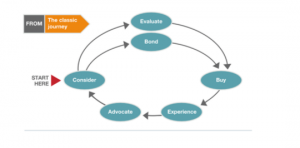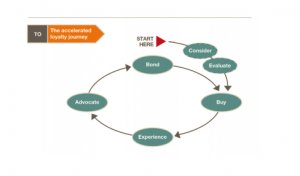
1984- The end @GaryGaro1
By Gary Gerardy
Another SCAB. Which means another episode on smart technology and advertising. The last one actually. So sad. I know. Well as I said before the integration of this smart technology in our daily life is pretending to act like a disruption and to alter the business models we know. Soon there will be no question of monetizing an object for its mere acquisition but for the use of the services it concedes. It is therefore wise to conceive the idea that the hardware, the object itself, is in the process of becoming a gateway, a support for services.
As we have seen, there are many products that, from now on, are offered various services bringing real added value to the experience. Some of these services are included in the initial price, others are subject to increased billing. By way of simplified regularization, new business models such as pay-per-use are emerging. The latter applies like a telephone subscription, ie it is no longer the acquisition of the product that is synonymous with being paid but the use of the services it offers. For example, we can take the company Bundles, founded in 2014, which offers clean clothes based on a pay-per-wash price. The customer, therefore, pays for his washing machine only according to its use. This is a random example but can easily be scaled as on the one hand we have the customer who is offered a tailor-made service for which he pays a fee exactly proportional to the use he makes of it. On the other hand, the company has the privilege of staying in permanent contact with the customer, thus benefiting from insights specific to its way of life.
Considering availability and service as assiduous and effective, we can induce the idea that the Internet of Things is about to also redefine the life cycle of products. Indeed, from the moment a product is given a constant watch, an immediate repair if necessary and an optimization as soon as an update is available, it is likely that its cycle life is lengthened. This should not be a problem for companies as it is now possible to extend monetization beyond the act of purchase. Even more so if the business models evolve towards models of invoicing with the use. Once again it is therefore beneficial to the ins and outs because we have on the one hand the company which is seen profiting from a monetization sustainable thanks to the quality and the guarantee of its products and on the other hand a satisfaction accompanied by a total loyalty on the part of the consumer towards his brand, which has become his partner.
Now with such a technological bloom and a myriad of information, it is possible to reinvent the famous diagram of the decision-making path of the purchase of a consumer proposed by McKinsey & Company.
Now thanks to this technology brands have the power not only to bridge the online and offline journey of the consumer but also to interact with it in due time. This allows one to influence one’s behaviour and decisions. In addition with contextual and behavioural information (online history, wish list, previous purchases, …), brands have the power to customize the entire course. It is therefore conditional on the intelligent use of the user’s data that the brands will be able to prune the decision-making scheme as they please and allow themselves to unify the consideration and evaluation phase, or even to delete them if the customer experience has been sufficiently valued. The result would then be to put the consumer directly in the loyalty loop.













